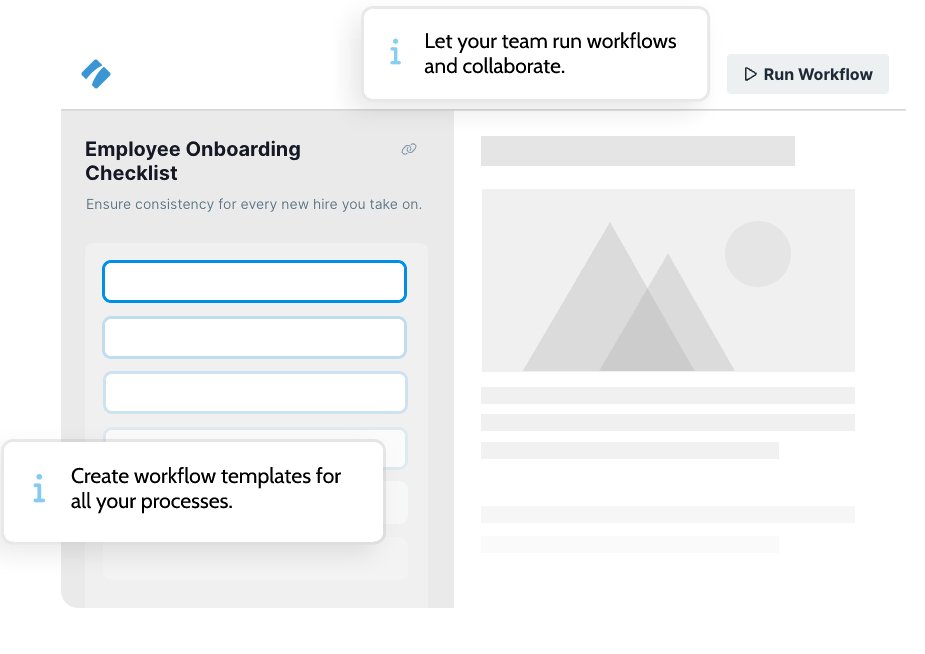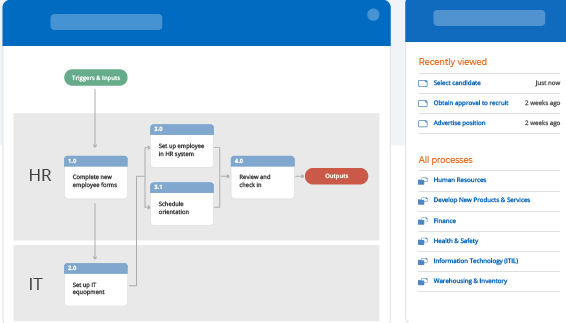Get work done right, and right-on-time with our industry leading BPM platform.
The Ultimate Guide to Process Management
There’s nothing more satisfying than seeing processes go from inefficient to streamlined.
And since we are a process management business, we know what we’re talking about.
So if you want to transform your internal processes, this page will guide you through it seamlessly.
What is process management?

Process management allows businesses to increase efficiency and reduce time spent on manual processes.
So what is process managemen (BPM)?
It’s a systematic approach that helps businesses to design, optimize, and automate internal processes. It’ll assist you with measuring and analyzing the performance of those processes.
Why is process management important?
There are many reasons why BPM is important and why you should incorporate it into your business.
Take a look at some of my favorites:
Makes teams more efficient
BPM will eliminate bottlenecks and remove human error by automating processes. This makes inputting data easier and faster, so your team can focus on other tasks.
Promotes agility
Businesses are ever-changing environments, so being flexible is key. Good BPM allows for that flexibility by helping you to review and manage processes in real time.
Increases transparency
Assigning processes and tracking the progress that’s been made can be tricky. A well-designed BPM lets you oversee your team’s work and increase transparency. All without having to micromanage (and no one likes that).
Process management stages
Each process has stages of completion, and so does process management.
To get the most out of your processes, follow these 5 process management stages to ensure success:
Stage 1: Analyze
The first step is analyzing your existing processes. Which ones are working efficiently and which ones aren’t? Identify what you’d like to improve.
Gather data on performance metrics. This can be either qualitative (value-added analysis), quantitative (the cause and effect model), or both.
This will help you understand where the problems are and will give you a good idea of what needs to be done to correct them.
Stage 2: Design
Now that you’ve performed your analysis, you can devise your strategy.
To do that, first go over your analysis. You’ve identified what you’d like to work on, so start thinking about your business aspirations.
Design a plan of how you envision the business to function, the “ideal management model,” if you will.
Stage 3: Execute
At this stage, you’ll know what needs to change and how you want those changes to look.
The fun part begins now because it’s time to start implementing the changes into your business.
To do this well, you’ll likely need some additional software and updates to procedures. You may also want to think about training. The new technology you implement will require your team to practice and learn.
Stage 4: Monitor
After a month or two, you can begin to collect data.
This is a critical stage because you’ll discover if your redesign is working. You can compare the new data with the original “baseline” to determine improvements.
And if certain processes don’t seem to move forward? Consider going back to step two or waiting another month to see how things progress over time.
Stage 5: Optimize
The fifth stage is all about perfecting your processes.
You may find that certain processes will work for a short time but then become ineffective. That’s fine. Don’t get discouraged. Evolution is all part of the journey, especially during periods of rapid growth.
Even though this is the last stage, you’ll probably end up going back and forth between the stages. Business is prone to change, and we should change with it.
Benefits of process management

So what are process management benefits?
There’s a ton! Not only are they great for lowering costs and making operations smoother, but they also increase business agility.
Take a look at all the process management qualities that make it amazing:
- Standardizes processes to reduce human error
- Automates manual tasks to save time
- Increases employee productivity and reduces micromanagement
- Promotes business flexibility and growth
- Boosts communication between departments and teams
- Lowers resource cost
You’ll notice improvements across the board if you implement and embrace business process management.
And if a certain process doesn’t meet your expectations, you can change it quickly.
Challenges of process management
If you’re willing to challenge the status quo, you will always encounter some obstacles.
But since the benefits far outweigh the challenges, I’d encourage you to take advantage of BPM anyway.
Be mindful of the challenges it may bring, though, as it’ll allow you to prepare for them in good time.
So the main process management challenges are:
Unclear goals
If you don’t have clear goals and objectives, you won’t make any progress. You may even damage your business processes further.
That’s why having a good idea of what you need is important. Make sure to create a good BPM strategy that fits your business objectives.
Choosing the wrong tools
If you pick the wrong technology, you risk wasting both your time and money. So take time when deciding what software to choose.
It’s always best to first analyze your business needs before browsing. However, remember that certain process management features are better than others.
Rushing it
It’s always tempting to complete your BPM process as soon as possible. But that’s when you may fall short.
Once you’ve created your strategy re-design, spend some time testing it. Make sure to go through a testing phase and tweak things accordingly.
Process management best practices
If you want to streamline your processes, try some BPM best practices to ensure success.
Always start by analyzing your existing processes
It may sound obvious, but many businesses go straight to process redesign. You can’t improve things if you don’t know what’s working and what’s not.
Implement solutions slowly
Don’t rush the process, and try to make a few small changes at a time. It’s better to go slow and have control over any changes you’ve made.
Go 100% digital
If you’re still inputting data manually into a spreadsheet, I urge you to reconsider. Time-consuming tasks such as these won’t help you at all. Instead, invest in a good BPM tool that will do all the tedious work for you.
Automate repetitive tasks
This relates to my previous point. Automations can be a lifesaver when there are multiple tasks to perform. So good process management software will come in handy.
Measure KPIs
If you want results, identify your KPIs. The next step would be to measure them consistently over time. That way, you’ll be able to measure your processes.
For a comprehensive guide to busines process management, download our free ebook.
Process management examples
There are many process management use cases you should be aware of. BPM can be applied throughout your business and across all departments.
Here’s a quick list of some process management examples:
Sales process management
BPM can help the sales team to automatically issue invoices, exchange quotes, and even coordinate tasks between team members.
This can assist the department with making it more agile. Your customers will also benefit because query response time will be reduced.
HR process management
Human Resources teams are notoriously overworked and flooded with data.
Luckily, BPM software can transform the way they work. From swapping manual tasks to simplifying onboarding, your HR team will become happier and more efficient.
Finance process management
Finance is one department where BPM software can make the most difference.
From receiving large volumes of documentation and data to countless emails, finance is no stranger to huge piles of paper forms.
Imagine the difference it’ll make when most of your processes are automated and all forms can be accessed in a single platform.
Process management software tools and vendors
Process Street

Process Street is a no-code platform that manages all processes.
We help teams to collaborate more effectively, onboard new hires swiftly, and getting approvals effortlessly.
Benefits
- No-code, beginner-friendly platform
- Integrate with all your favorite external apps
- Secure interface that lets you choose who sees your workflows
- Conditional logic allows you to build “smart” visual workflows to make them flexible and dynamic
Price
- Free 14-day trial.
- Startup $100 per month
- Pro $415 per month
- Enterprise $1660 covers everything from the Pro plan + a dedicated Success Manager
Try us for free.
CMW Lab

CMW Lab is a robust business process management tool.
It’s a great step up from Outlook and Excel-based activity. It allows you to build and automate workflows according to your needs.
Benefits
- Low-code interface great for intermediate users
- Available on mobile phones
- Integrations with many external apps
- Drag-and-drop workflow and form configurations
Price
There are three pricing tiers available, but you need to contact CMW directly for a quote.
Nintex

Nintex is a developer-friendly cloud solution for enterprises.
It was designed to work alongside Sharepoint, Office 365, and Project Saver. The platform is best suited for larger companies as it requires input from web developers.
Benefits
- Made for Microsoft
- Completely customizable to those who know how to code
- You can create advanced workflows and forms
Pricing
Prices start from $850/month.
Process management templates
If you’re looking for an example of a BPM template, look no further.
If you’re a SaaS company, you’ll know that high churn rates can negatively impact your business. They can also damage your company’s reputation in the long run.
At Process Street, we believe that onboarding clients effectively can be easier than it seems.
It’s all down to making the right decisions from the get-go. And what is one of the best decisions you can make when onboarding new clients?
Making the right impression.
Yes, it may seem easy, but many companies get it wrong.
Uncover the secrets to creating a lasting impression with our High Touch Client Onboarding workflow:
Process management automation
All businesses want to save money and streamline their everyday operations.
This is where process management automation comes into play: It’ll help you improve virtually all areas of your business.
By utilizing automations, you can:
- Save time by handling approvals quickly
- Communicate better by tracking everyone’s progress
- Eliminate the need for repetitive tasks by, well…automating them!
- Make all internal processes more efficient
- Receive or give instant feedback on your or your team’s work
When it comes to automating business processes, it will always be a win-win, regardless of what software you choose.
But not all software is created equal.
So make sure to read our ultimate guide to process management to choosing the perfect platform.
Process management optimization
Similar to automation, optimization increases efficiency and improves processes.
And optimizing processes leads to meeting business goals.
Since your company is at constant risk of being overtaken by others, BPM optimization can also:
- Reduce risk
- Help forecast business trends and changes
- Assure market compliance
- Improve business visibility
In other words, it’s a secret to always staying afloat and navigating a difficult industry.
Future of process management
For years, struggling businesses have been trying to find a solution to their many problems from effective employee onboarding to streamlining internal processes.
The 21st century has brought many new technologies and solutions to such problems, and BPM is just one of them.
Automating and optimizing processes is now easy, thanks to various BPM software available on the market.
But the constantly evolving business environments are prompting new solutions to emerge daily.
If you want to scale your business and make it irresistible to customers, it’s well worth observing the current market and staying up-to-date.







 Workflows
Workflows Projects
Projects Data Sets
Data Sets Forms
Forms Pages
Pages Automations
Automations Analytics
Analytics Apps
Apps Integrations
Integrations
 Property management
Property management
 Human resources
Human resources
 Customer management
Customer management
 Information technology
Information technology


